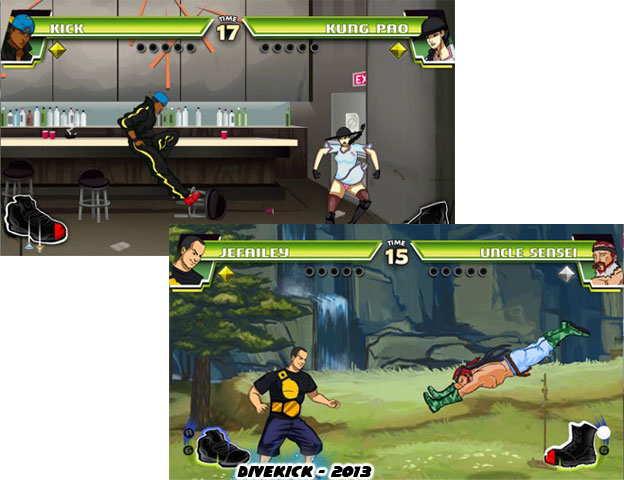
The 2013 game Divekick by One True Game Studios spread like wildfire. It was an insanely addictive web-based fighting game that had all the momentum of a viral meme. It was easy to play, audiences really only needed one button and some strategy to win. The purpose was to be the first person to hit the opponent. Players did not have to worry about learning complex combos, they did not have to learn secret moves or anything else. They only needed to learn how to pace themselves and be the one to deliver a kick to their opponent. Now audiences could "buy" upgrades to make their character react faster or move in different directions while kicking, but for the most part audiences enjoyed the rudimentary gameplay. They enjoyed it so much that it became a featured title at the EVO fighting game championships.
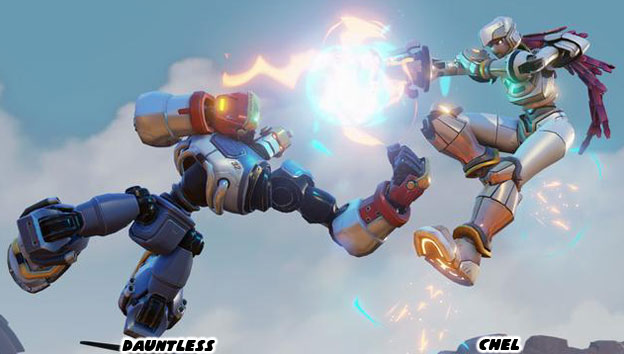
Rising Thunder would be far more robust than Divekick. It would have far more features, greater graphics, tighter balance and a control scheme reminiscent of the best fighting games. The stars of the game would be sentient robots about 2-3 stories tall. They were humanoid in their construction and moved very much like people. It would be easier for a gamer to learn effective ranges and strategies if the robots controlled like people after all. Some of these robots could make use of ranged gun-type weapons, not unlike Vector and Omega from the Star Gladiator series, and others had use of close range weapons like energy swords. What appealed to me were the designs used on the robots. They did not have to have "genders" but I'm glad the designers at Radiant Ent. decided to do just that.
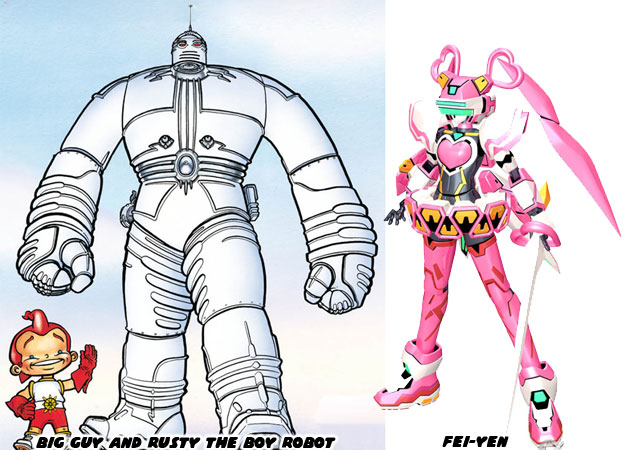
The idea of gendered robots has been around for centuries. In pop culture these ideas were often repeated in movies and animation. Mickey Mouse after all built a mechanical "man" in 1933. Also the first full length feature was a 1927 expressionist movie called Metropolis. Director Fritz Lang introduced the world to a female robot named Maria. Comic books were not immune to the idea of gendered machines either. Astro Boy was presented as a child but his origins were parodied years later. The Big Guy and Rusty the Boy Robot was a post-modern send up of the robot genre. Writer Frank Miller and artist Geof Darrow did a great job at reinventing the robot myth in 1995. It was far more graphic and disturbing than Osamu Tezuka had ever presented. Around that same time Sega was incorporating boy and girl robots in their Virtual On fighting series. Hints of these characterizations could be seen in the cast of Rising Thunder.
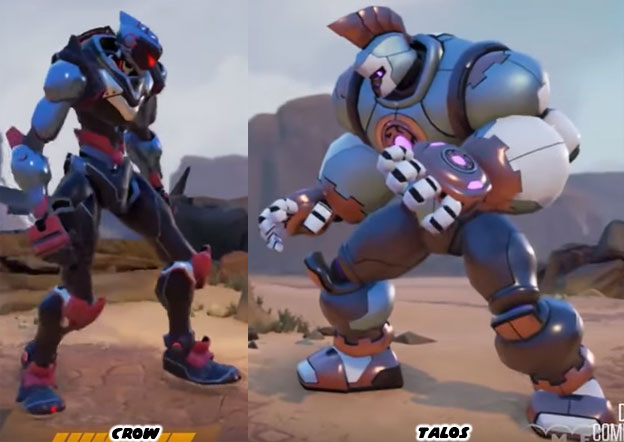
The characters in Rising Thunder were reminiscent of the square-jawed Rock 'em Sock 'em robots, and Atom from Real Steel. The classic anime robots like Tetsujin 28 and the modern EVA Units were also reflected in these new robot designs. Yet they also had their own unique look, a very smooth and seamless aesthetic that had one foot in Japan and one foot in the USA. The figures lent themselves very easily to a toy line or at the least a series of collectable statues. I would only hope that Radiant Entertainment had plans for merchandising should the game become as big a hit as they anticipate.
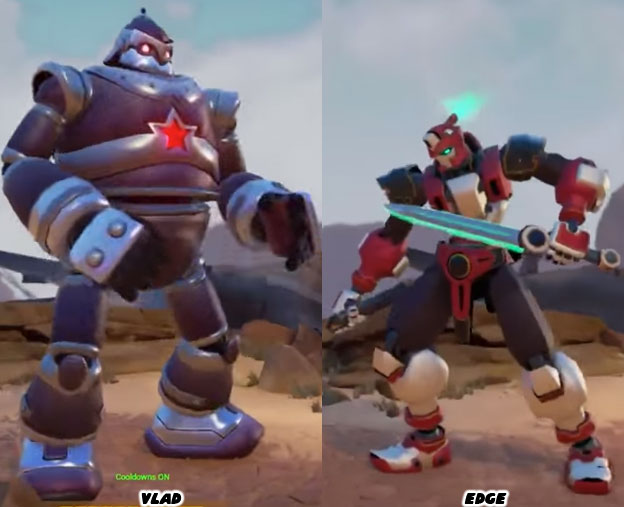
Of course the game was not all style without substance. Radiant Ent. was experimenting with the play mechanics, since these were robots and not human martial arts masters they wanted to introduce some new ideas to the genre. These robots were internally powered but their special attacks could drain their batteries which left them vulnerable to counter attacks. The characters would have to let their weapons recharge before they could fire off another powerful attack. It was a balance issue that even studios like Capcom had a problem figuring out. Energy aside there were many great ideas that Rising Thunder had going for it. Even as early as in the public beta there was a certain sense of polish that Rising Thunder had going for it. This was not going to be just another web-based fighting game but something more profound. I'm glad that the studio took a risk on basing the characters on robots. They are after all the ultimate machines and something that just about every generation had grown up reading about in comics and watching in movies. It was a long time before we got to experience the freedom and power of controlling these characters in a game. Audiences had to wait for the technology and platforms to be ready for the next evolutionary step in the genre. I wish Seth Killian and everyone at Radiant Entertainment the best of luck and can't wait to see where this game takes us. As always if you enjoyed this blog and would like to sponsor me please visit my Patreon page and consider donating each month, even as little as $1 would help make better blogs and even podcasts!

No comments:
Post a Comment